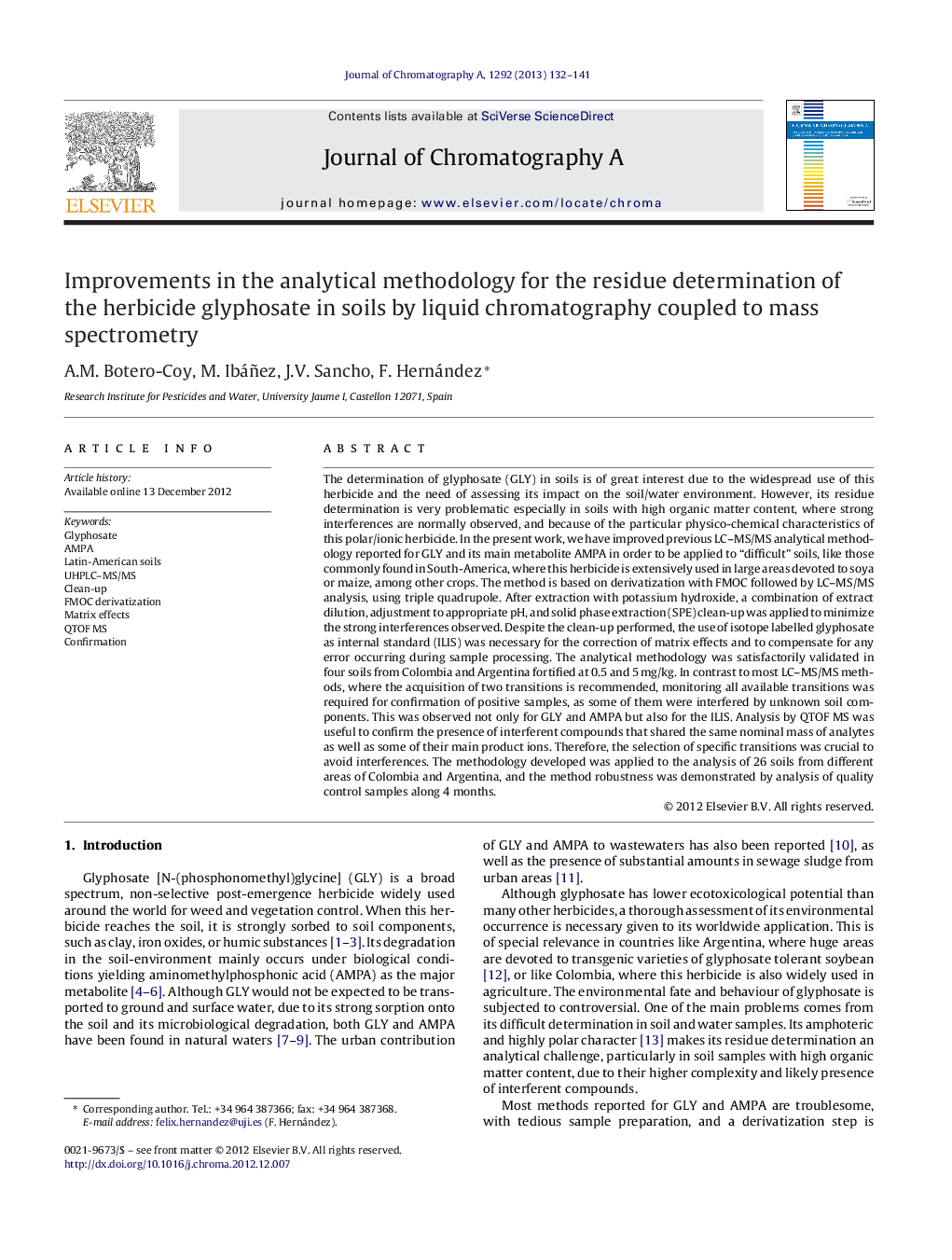| کد مقاله | کد نشریه | سال انتشار | مقاله انگلیسی | نسخه تمام متن |
|---|---|---|---|---|
| 1201108 | 1493634 | 2013 | 10 صفحه PDF | دانلود رایگان |

The determination of glyphosate (GLY) in soils is of great interest due to the widespread use of this herbicide and the need of assessing its impact on the soil/water environment. However, its residue determination is very problematic especially in soils with high organic matter content, where strong interferences are normally observed, and because of the particular physico-chemical characteristics of this polar/ionic herbicide. In the present work, we have improved previous LC–MS/MS analytical methodology reported for GLY and its main metabolite AMPA in order to be applied to “difficult” soils, like those commonly found in South-America, where this herbicide is extensively used in large areas devoted to soya or maize, among other crops. The method is based on derivatization with FMOC followed by LC–MS/MS analysis, using triple quadrupole. After extraction with potassium hydroxide, a combination of extract dilution, adjustment to appropriate pH, and solid phase extraction (SPE) clean-up was applied to minimize the strong interferences observed. Despite the clean-up performed, the use of isotope labelled glyphosate as internal standard (ILIS) was necessary for the correction of matrix effects and to compensate for any error occurring during sample processing. The analytical methodology was satisfactorily validated in four soils from Colombia and Argentina fortified at 0.5 and 5 mg/kg. In contrast to most LC–MS/MS methods, where the acquisition of two transitions is recommended, monitoring all available transitions was required for confirmation of positive samples, as some of them were interfered by unknown soil components. This was observed not only for GLY and AMPA but also for the ILIS. Analysis by QTOF MS was useful to confirm the presence of interferent compounds that shared the same nominal mass of analytes as well as some of their main product ions. Therefore, the selection of specific transitions was crucial to avoid interferences. The methodology developed was applied to the analysis of 26 soils from different areas of Colombia and Argentina, and the method robustness was demonstrated by analysis of quality control samples along 4 months.
► Improved LC–MS/MS method for glyphosate and AMPA residues in soils.
► Problematic ion ratio confirmation as soil components interfere MS/MS transitions.
► Strong matrix interferences in soils leading to severe ionization suppression.
► SPE clean-up required with Oasis HLB prior to derivatization with FMOC.
► Non-specific transitions should be avoided, e.g. those derived from FMOC.
Journal: Journal of Chromatography A - Volume 1292, 31 May 2013, Pages 132–141